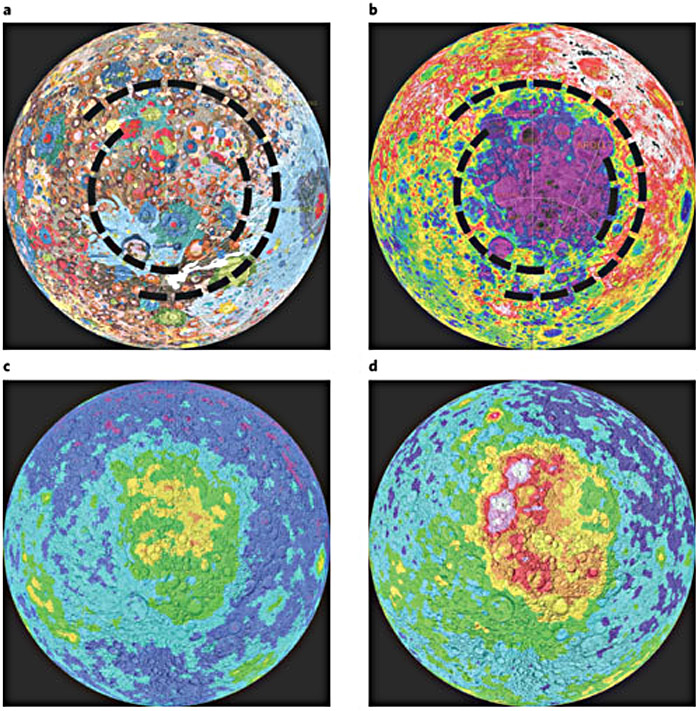July 5, 2018
Big Backside Basin
Originally published April 7, 2009

image from Nature Geoscience
The journal Nature Geoscience focuses on planetary geology for its April issue, and until April 30th all of the articles are freely available online! Although you may be interested in the articles on Mars, Mercury, Mars, Titan, Mars, and Mars, you might be most interested in Paul Spudis' three-page article, Back to the Moon. It has the obligatory section on the lunar poles, and a short mention of lunar resources, but most is about early lunar history, including the South Pole-Aitken Basin, once known as the Big Backside Basin. The illustration here, from Paul's article, shows how anomalous the SPA Basin is. Map (a) plots different terrain units within the 2500 km wide two-ring basin. In (b) it is clear that the basin is the biggest deep spot on the farside (and the nearside too), with up to 12 km of vertical elevation between its rim and floor. The basin floor is iron-rich (c) and thorium-rich (d), characteristics unlike the rest of the farside. Did the impact expose the lower crust and maybe the lunar upper mantle, or are the iron and thorium abundances just evidence for KREEP type volcanism, familiar from the nearside? Results from Kaguya, LRO and other recent lunar orbiters may provide data to answer these questions, but a future sample return from the floor of the SPA may be required for a definite answer. I'll go.
Chuck Wood
Related Links
Rükl page 191
Yesterday's LPOD: Big Ghost Ring
Tomorrow's LPOD: Rilles Almost All Around
COMMENTS?
Register, Log in, and join in the comments.



